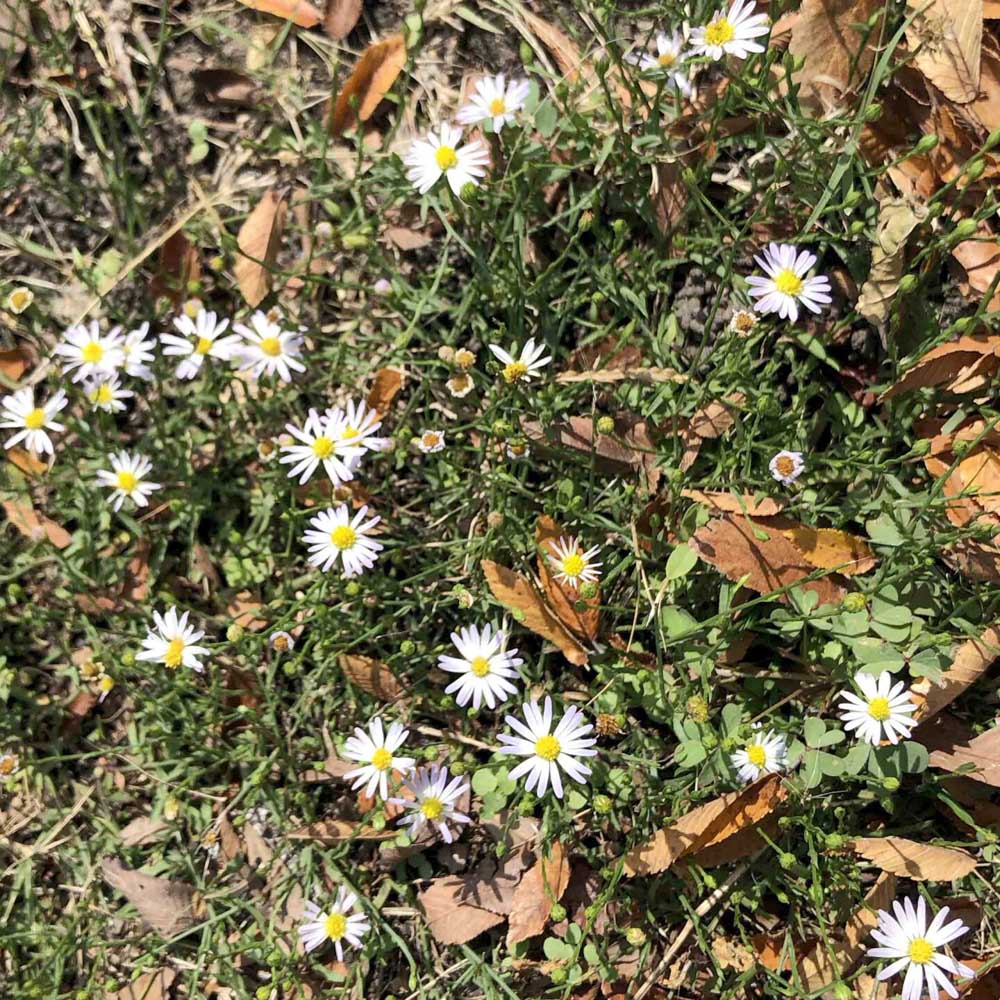Sperry: Tree decay and harmless mushrooms
Published 11:54 pm Sunday, November 10, 2024

- The long-term remedy for roadside aster is to take the best possible care of your turf. (Contributed Photo)
Dear Neil: One of my five oak trees is having this problem and I’m wondering what I should do. I hope it’s not a disease that could spread to my other trees. Thanks for any advice you can give me.
I would begin by calling for the help of a certified arborist. That’s a skilled and licensed tree service specialist who is a member of the International Society of Arboriculture. He or she will be able to examine the tree closely and determine whether this is Hypoxylon canker or some other fungus within the wood of the trunk. I will tell you that the signs are ominous because the bark is separating down the main trunk and up both forks/branches. This darker internal wood is probably moist from decay. As totally involved as it is, there is a very good chance that this tree cannot be saved. However, it would be much better to let the professional arborist examine the tree in person, take samples for culturing (perhaps at the Texas A&M Plant Disease Diagnostic Lab in College Station), and develop the best plan for you. Often trees with decaying wood in their trunks are beginning to lose strength. They can come tumbling down without warning. I would contact the certified arborist immediately. I’m sorry for the nature of my reply.
Trending
Dear Neil: What weedkiller do I use to control this weed? When do I apply it? Do I use a pre-emergent type or a spray?
Your sample is of roadside aster, and many people are asking about it right now. You’ll see it showing up where you’ve had the hardest time getting water and fertilizer to your lawn this growing season. The remedy long-term is to take the best possible care of your turf. This weed disappears when turfgrass is kept vigorous. You could apply a Gallery pre-emergent product in mid-March and again in mid-June, or you could apply a 2,4-D broadleafed weedkiller spray as you begin to see its wispy little stems.
Dear Neil: I have four bougainvillea hanging baskets that I would like to keep over the winter for next spring and summer. I do not have a greenhouse. What conditions would they require to do well? I do have a screened porch, and I could cover them when needed. Should I cut them back?
Winter always brings on some tough decisions. In this case, bougainvilleas begin to shut down and drop leaves when they are kept cool (below 45) and in less than bright sunlight. A greenhouse, as you suggested, would be great. Second choice would be beneath a large skylight or against a south-facing bay window. If the screened porch is enclosed in any way so that it can be heated, that might work, but just covering bougainvilleas won’t be adequate in most parts of Texas. If trimming them back means you could get them into a brighter, warmer spot, you could do so.
Dear Neil: What is this tree, and how well will it do in a Texas landscape? I thought its trunk was really pretty.
This looks like it’s Mexican sycamore (Platanus mexicana). If so, it’s suited to the southern half of the state. It’s a sister to the larger American sycamore, and perhaps less susceptible to anthracnose than its relative. That disease takes out entire large limbs of the American sycamore (plane tree) in a season. And yes, the bark is stunning. It exfoliates to leave lovely trunks behind.
Trending
Dear Neil: The rains a week or two ago found my 20-year-old Bradford pear leaking water that quickly bubbled like soapsuds. What causes this, and what should I do?
Bradford pears have notoriously weak crotches (branch angles). Think of your index and middle fingers forming a “V” for “Victory” symbol. That’s the way Bradford pears branch, except there are many branches involved. As those branches grow larger and larger, they grow together, capturing water, dirt, bark, etc. between the branches.
Eventually, all that accumulation begins to fester, and a bacterial disease called “slime flux” or “wetwood” gets a start. As the fermenting continues, the pressure of gasses builds up within the tree’s tissues until it is all expelled through a cavity. Under that pressure, it forms bubbles much as foaming hand soap does when you push down on the plunger.
In the case of Bradford pears, this poor branch angle becomes a very weak point in the tree, and within a few months, half or more of the tree may split and fall to the ground. Sadly, there is no control other than to remove the tree and plant something else. If you’ve gotten 20 years out of a Bradford pear, you really got your money’s worth!
Dear Neil: I’ve never had mushrooms show up like this in my lawn. Is it anything I need to be worried about?
No. They’re living off decaying organic matter. They’re usually gone within a week or two. They may reappear another year, but they do no harm to the grass.





